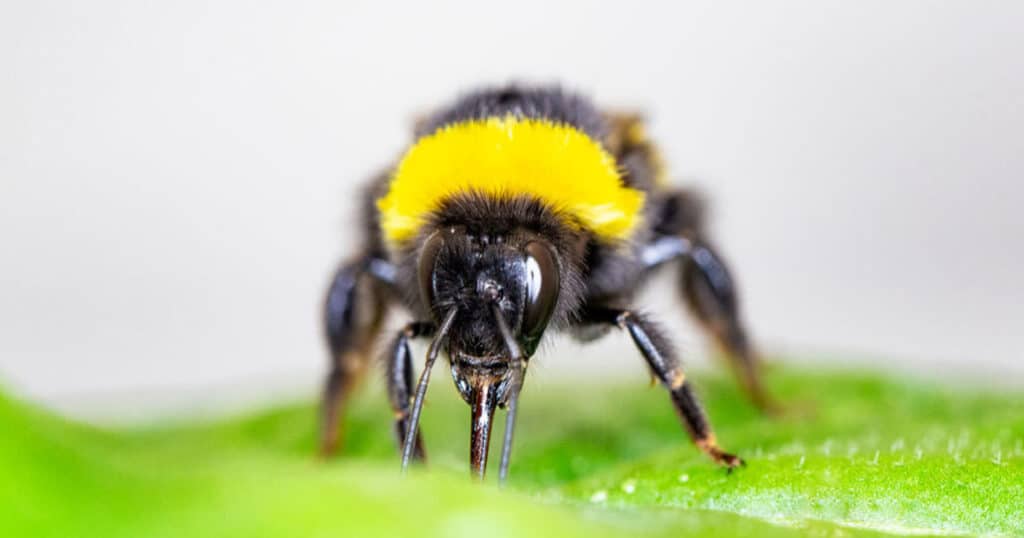
Bumblebees Teach Each Other How to Solve Puzzles
Social learning, in which members of the same species learn new behaviors from each other, is thought to be relatively rare within the animal kingdom, mastered by only the biggest-brained social creatures. But as new research published in PLoS Biology shows, bumblebees might buck that conventional wisdom.
We know that chimpanzees are capable of social learning. They craft “probing” tools from twigs to fish tasty termites out of holes in logs, and teach their young to do the same. Moreover, some dolphins utilize and pass on a behavior called shelling, in which they chase fish into the empty shells of giant gastropods, then bring the shells to the surface where they drain out the water and shake the fish into their open mouths. (Didn’t their mothers ever teach them not to play with their food?)
While bumblebees of the species Bombus terrestris aren’t quite capable of those advanced eating techniques, a team of scientists hailing from various institutions in the United Kingdom did manage to teach a few brainy bees to solve a basic puzzle to attain a sugary reward. They then released these learned bumbles into their colonies, where, lo and behold, the behavior spread.
Social learning
The puzzle that the researchers taught their “demonstrator” bumblebees to solve was very basic: “[It consisted of] boxes that could be opened by rotating a clear lid around a central axis by either pushing a red tab clockwise or a blue tab counter-clockwise,” they described.
Once the demonstrator bumblebees were quite adept at opening the lids and getting to the sugar treat underneath, the researchers released them into colonies with hundreds of individuals, and with a number of puzzle boxes spread throughout their enclosures. In two different experiments — respectively lasting six and 12 days — the researchers watched other bees within the colonies learn to open the lids and procure the sugar inside. Moreover, some of the demonstrators were trained to push the red tabs while others were trained to push the blue tabs, and they were released into separate colonies. Other bees which picked up the behavior followed the color preferences of their demonstrators.
At the same time, bumblebees in control colonies lacking the “demonstrator” bumblebees struggled to solve the puzzles.
“The results… provide strong evidence that social learning underpins the transmission of novel foraging behaviours in bumblebees,” the researchers wrote
Interestingly, a few bees in the control colonies did figure out the puzzles by themselves, including one rather genius bee, dubbed “y12”, which single-handedly opened the boxes 216 times during the experiment, absolutely gorging itself on the sugar solution.
A basis for culture?
Scientists who’ve studied social learning in other species argue that the ability forms the basis for culture, “broadly defined as the sum of a population’s behavioural traditions, which are in turn defined as socially learned behaviours that persist within a population over time and/or generations,” the researchers explained.
So is it possible that bumblebees have a rudimentary culture? The authors say that’s unlikely.
“The lifespan of individual B. terrestris workers is brief, and colonies collapse before the winter. If no workers survive past the decline of annual colonies at the end of the season, any foraging traditions should be lost with them. Thus, it seems unlikely that B. terrestris would build cultures that span biological generations in the wild, but the results reported here support the notion that the cognitive capacities for this to occur are in place.”
However, other socially intelligent insects, including honeybees, do live in colonies that persist for years. So it’s possible that they could have something resembling culture in their societies.
This article was first published at Big Think.
This article was originally published by RealClearScience and made available via RealClearWire.



